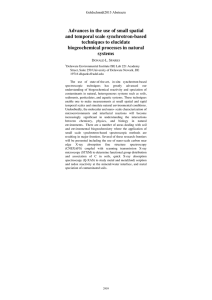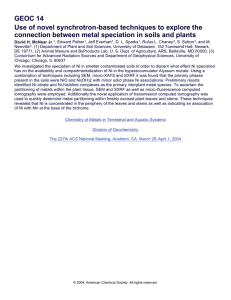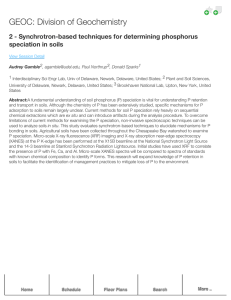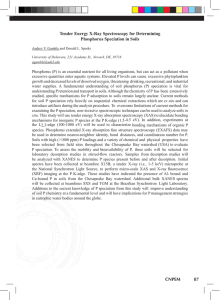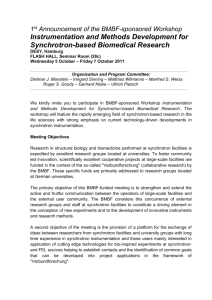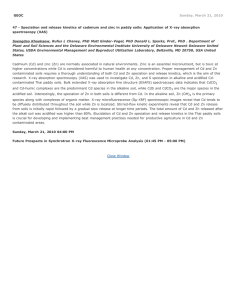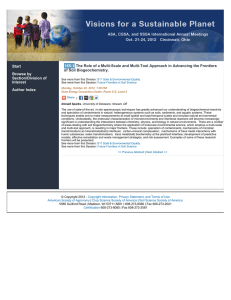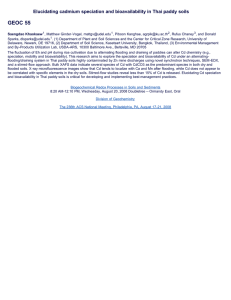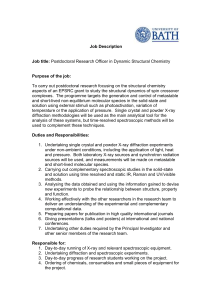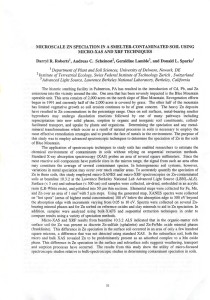Professor Donald L. Sparks
advertisement
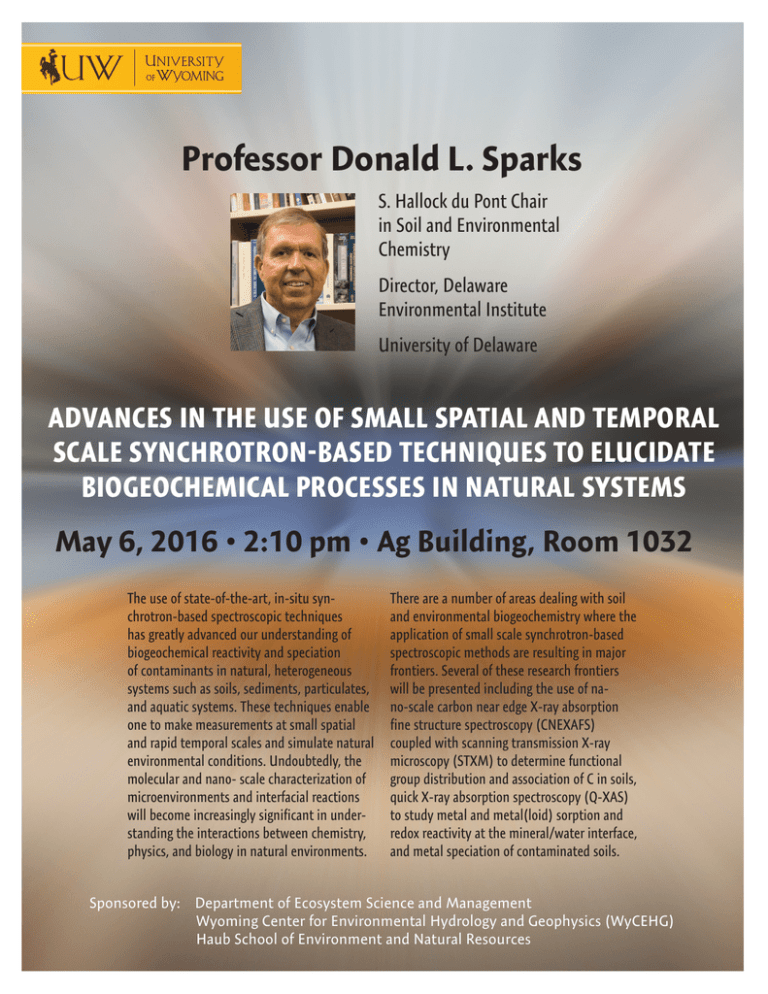
Professor Donald L. Sparks S. Hallock du Pont Chair in Soil and Environmental Chemistry Director, Delaware Environmental Institute University of Delaware ADVANCES IN THE USE OF SMALL SPATIAL AND TEMPORAL SCALE SYNCHROTRON-BASED TECHNIQUES TO ELUCIDATE BIOGEOCHEMICAL PROCESSES IN NATURAL SYSTEMS May 6, 2016 • 2:10 pm • Ag Building, Room 1032 The use of state-of-the-art, in-situ synchrotron-based spectroscopic techniques has greatly advanced our understanding of biogeochemical reactivity and speciation of contaminants in natural, heterogeneous systems such as soils, sediments, particulates, and aquatic systems. These techniques enable one to make measurements at small spatial and rapid temporal scales and simulate natural environmental conditions. Undoubtedly, the molecular and nano- scale characterization of microenvironments and interfacial reactions will become increasingly significant in understanding the interactions between chemistry, physics, and biology in natural environments. There are a number of areas dealing with soil and environmental biogeochemistry where the application of small scale synchrotron-based spectroscopic methods are resulting in major frontiers. Several of these research frontiers will be presented including the use of nano-scale carbon near edge X-ray absorption fine structure spectroscopy (CNEXAFS) coupled with scanning transmission X-ray microscopy (STXM) to determine functional group distribution and association of C in soils, quick X-ray absorption spectroscopy (Q-XAS) to study metal and metal(loid) sorption and redox reactivity at the mineral/water interface, and metal speciation of contaminated soils. Sponsored by: Department of Ecosystem Science and Management Wyoming Center for Environmental Hydrology and Geophysics (WyCEHG) Haub School of Environment and Natural Resources
